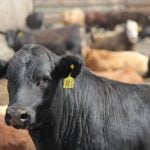Canadian farm groups have more questions than answers about what will happen if the North American Free Trade Agreement is reopened.
U.S. President Donald Trump says he wants to renegotiate the pact because it has been a one-sided deal that has damaged the U.S. economy through lost jobs and industry.
The U.S. is forecast to run a trade deficit with Mexico of close to $60 billion in 2016 and a smaller deficit of $9 billion with Canada, its other NAFTA partner.
There is plenty of trepidation about what would happen if the 1994 agreement were reopened, but pundits, including Prime Minister Justin Trudeau, believe the concessions Trump is seeking are from Mexico rather than Canada.
Read Also

Using artificial intelligence in agriculture starts with the right data
Good data is critical as the agriculture sector increasingly adopts new AI technology to drive efficiency, sustainability and trust across all levels of the value chain.
“The (Trump) administration has made it very clear both to us and publicly that they are not overly preoccupied with Canada in terms of much of their protectionism and much of the rhetoric they put out,” he said during a session with reporters before a town hall meeting in Saskatoon last week.
“They actually have emphasized to us that the trade relationship with Canada is a good one, is a balanced one, is one that they value and one that they understand is good for not just the northern states but many states across the United States.”
Lynn Jacobson, president of the Alberta Federation of Agriculture, said his palms get sweaty when the top customer of Canadian agri-food products says it wants to renegotiate a free trade deal.
“It’s a bit of a concern with all farm groups just to see where it’s going to go,” he said.
“Some of the things AFA would be concerned about is, are they going to try and go after supply management?”
Ron Bonnett, president of the Canadian Federation of Agriculture, worries about supply management as well as whether the U.S. will use the discussions to take another run at country-of-origin labeling.
He said a number of U.S. farm groups are worried about the growing protectionist sentiment in that country.
Bonnett and his two vice-presidents are flying to Washington, D.C., next week to meet with representatives of the American Farm Bureau Federation, the National Farmers Union and the head of the Senate agriculture committee to see if they can get a better feel for what’s going on south of the border.
“It’s about building alliances at this point with groups in the States that sort of feel the benefits of that open trade taking place,” he said.
Bonnett is encouraged by Trump’s appointment of Sonny Perdue as agriculture secretary.
“He was very pro-trade when he was governor of Georgia,” he said.
Claire Citeau, executive director of the Canadian Agri-Food Trade Alliance, does not like the “protectionist push” suddenly emanating out of the U.S.
“That is not good for trade in general,” she said.
NAFTA eliminated almost all tariffs on Canadian agricultural exports to the U.S. with the exception of chicken, turkey, eggs and refined sugar. It also established a rules-based system for resolving disputes.
The Canadian ambassador to the U.S. has stated that Canada is open to renegotiating the terms of NAFTA.
Citeau does not know what that will mean for agriculture. There are more questions than answers at this point.
The U.S. is the top market for Canadian agri-food products, buying more than $28 billion worth of goods in 2015 compared to $8 billion in 1994, the year NAFTA was implemented.
“The promise to renegotiate something that has been so beneficial for our exporters and economies across the three nations really raises eyebrows and questions,” Citeau said.
Canada exports live cattle, bakery products, canola, beef, pork, animal feed, cereal grains, potatoes and food preparations including confectionary and sugar-containing products to the U.S.
It also imported $26 billion in agri-food products from the U.S. in 2015, including food preparations, bakery goods, beef, fruits, vegetables and beverages.















